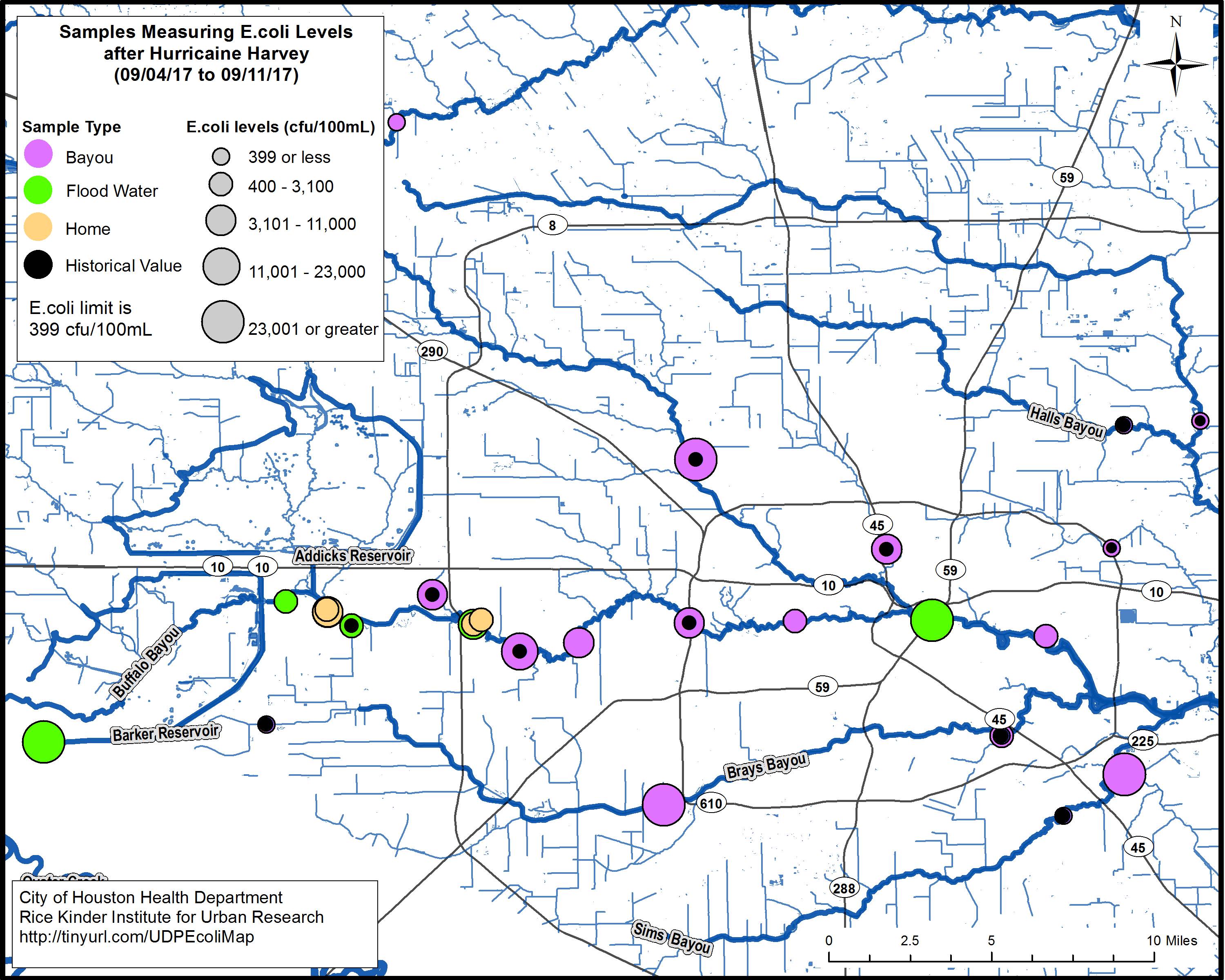In bayous, floodwater and even some homes in Houston, levels of E. coli were above normal after Harvey, according to ongoing monitoring conducted by Houston's health department, researchers with the Kinder Institute for Urban Research and Baylor College of Medicine. Tests done as recently as September 11 revealed elevated levels in numerous sites, including inside flooded homes. In some cases, the levels were more than 57 times above the acceptable limit.
The City of Houston regularly monitors E. coli levels at over 300 sites, according to health officials, but researchers wanted to see not only whether those levefs were up following the flooding but chose 12 to monitor more regularly following the unprecedented inundation caused by Harvey. The University of Houston will also help monitor an additional seven sites.
"E. coli counts in surface water tend to increase after rain events," according to a statement from the health department. "The increase is due to non-point source runoff and storm water infiltration into the sewage system."
Other environmental testing around the area has revealed everything from elevated levels of benzene in neighborhoods around the port, according to Air Alliance Houston, to lead and mercury.
While E. coli is not typically pathogenic, meaning many of its strains are often harmless, it's used an indicator "for the kinds of fecal contamination that causes illness," according to the health department. It can often indicate the presence of other more harmful microbes that cause things like diarrhea, vomiting and fever.
The map above was created using 37 different samples taken between Sept. 4 and 11. Historical averages, shown in black and calculated from the regular, ongoing monitoring that the city does, can be used to gauge just how elevated the levels are following Harvey. According to state standards, the acceptable limit for E. coli is just 399 colony forming units per 100 mL but the relative size of the circles at each test site reveal just how severely that level was exceeded.
Individuals digging out after the storm should use extra caution while cleaning and disinfect all surfaces.

